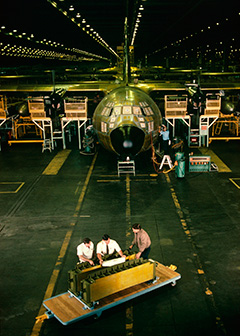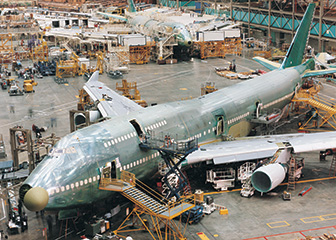
Aerospace engineers use the principals of calculus, trigonometry, and other advanced topics in mathematics for analysis, design, and troubleshooting in their work.
Aerospace engineers must have a bachelor’s degree in aerospace engineering or some other field of engineering or science related to aerospace systems. Some aerospace engineers work on projects that are related to national defense and thus require security clearances. U.S. citizenship may be required for certain types and levels of clearances.
Education
Entry-level aerospace engineers usually need a bachelor's degree. High school students interested in studying aerospace engineering should take courses in chemistry, physics, and mathematics, including algebra, trigonometry, and calculus.
Bachelor’s degree programs are designed to take 4 years and include classroom, laboratory, and field studies in subjects such as general engineering principles, propulsion, stability and control, structures, mechanics, and aerodynamics, which is the study of how air interacts with moving objects.
Some colleges and universities offer cooperative programs, in partnership with industry, that give students practical experience while they complete their education. Cooperative programs and internships allow students to get valuable experience and to finance part of their education.
At some universities, a student can enroll in a 5-year program that leads to both a bachelor’s degree and master’s degree upon completion. A graduate degree will allow an engineer to work as an instructor at a university or to do research and development. Programs in aerospace engineering are accredited by ABET (formerly the Accreditation Board for Engineering and Technology).
Important Qualities
Analytical skills. Aerospace engineers must be able to identify design elements that may not be meeting requirements in particular operating environments and then formulate alternatives to improve their performance.
Business skills. Much of the work done by aerospace engineers involves meeting federal government standards. Meeting these standards often requires knowledge of standard business practices, as well as knowledge of commercial law.
Critical-thinking skills. Aerospace engineers must be able to translate a set of issues into requirements and to figure out why a particular design does not work. They must be able to ask the right question and then to find an acceptable answer.
Math skills. Aerospace engineers use the principals of calculus, trigonometry, and other advanced topics in mathematics for analysis, design, and troubleshooting in their work.
Teamwork. Aerospace engineers must work with other professionals involved in designing and building aircraft, spacecraft, and their components. They must be able to communicate well, divide work into manageable tasks, and work with others toward a common goal.
Writing skills. Aerospace engineers work with many other professionals, often other kinds of engineers. They must be able to write papers that explain their designs clearly to these professionals. They must also create documentation for future reference.
Licenses
Aerospace engineers are not required to be licensed at the entry level. More experienced aerospace engineers, who have more responsibility, must be licensed as professional engineers (PE). Licensure generally requires the following:
- A degree from an engineering program accredited by ABET
- A passing score on the Fundamentals of Engineering (FE) exam
- Relevant work experience
- A passing score on the Professional Engineering (PE) exam
The initial Fundamentals of Engineering (FE) exam can be taken right after graduating with a bachelor's degree. Engineers who pass this exam commonly are called engineers in training (EITs) or engineer interns (EIs). After acquiring suitable work experience, EITs can take the second exam, called the Principles and Practice of Engineering exam.
Several states require engineers to take continuing education courses to keep their licenses. Most states recognize licenses from other states, as long as the other states’ licensing requirements meet or exceed their own licensing requirements.
Advancement
Eventually, aerospace engineers may advance to become technical specialists or to supervise a team of engineers and technicians. Some may even become engineering managers or move into executive positions, such as program managers. However, preparation for assuming a managerial position usually requires serving an apprenticeship under a more experienced aerospace engineer. For more information, see the profile on architectural and engineering managers.












